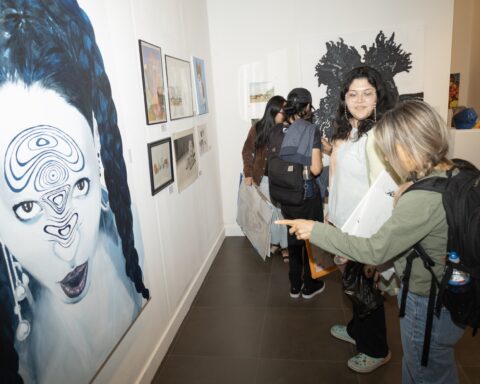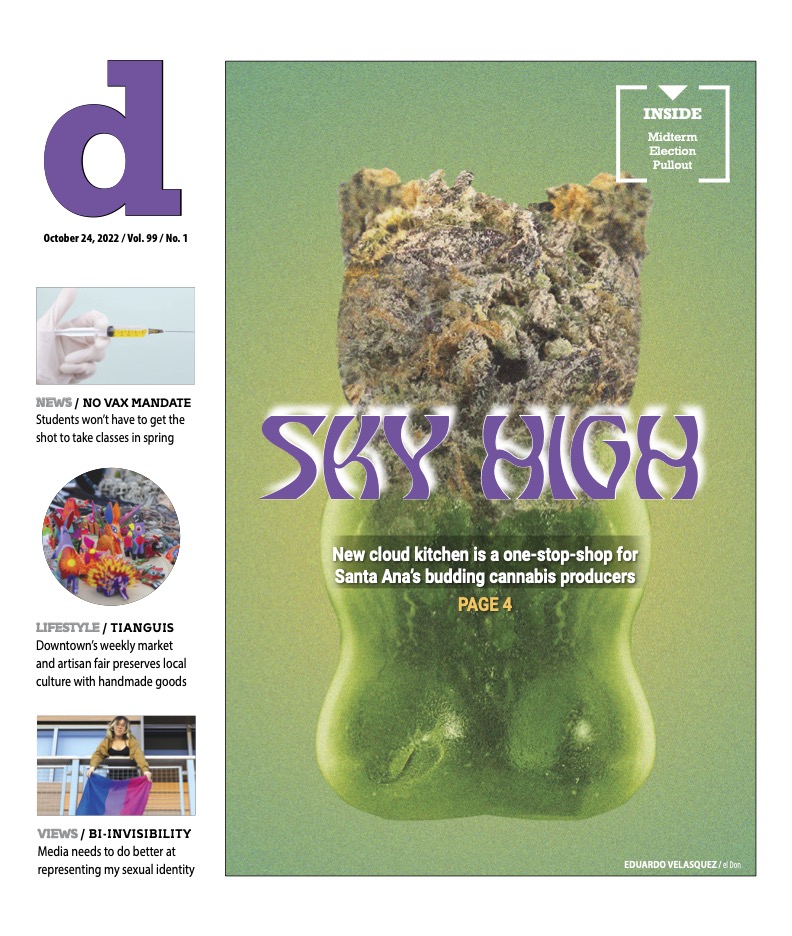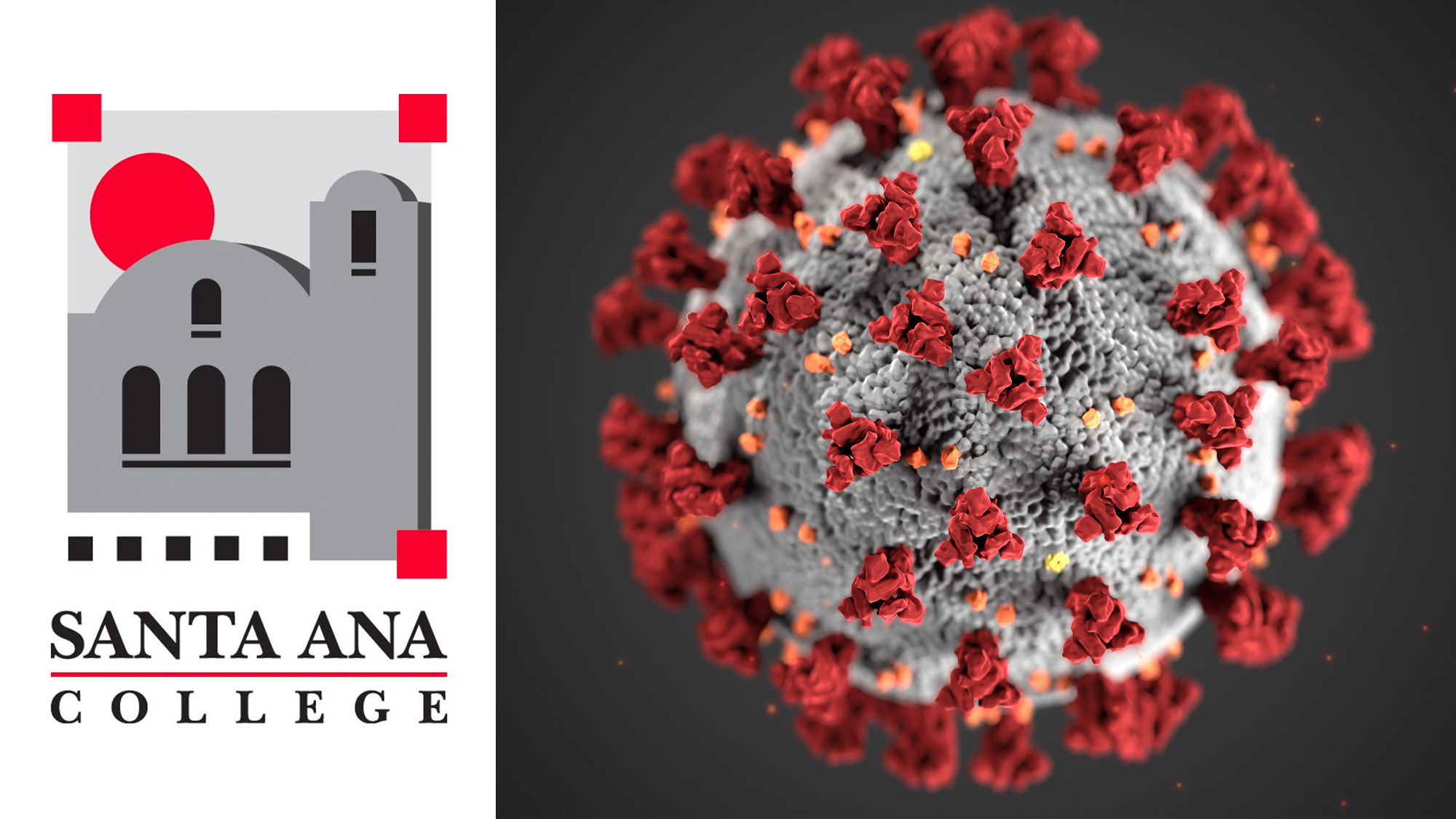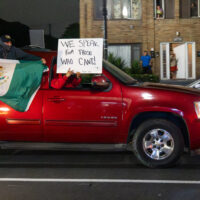Every Sunday, Orange County’s only tianguis brings aguas frescas, crepes, local artisans and indigenous vendors to downtown Santa Ana, creating a vibrant and cultural safe space in a city with few.
Tianguis Market is a certified farmers market but it’s also so much more.
“Tianguis” comes from the Nahuatl word tiyānquiztli, which refers to open-air markets with fresh produce and artwork.
Founder Nico Armenta said he wanted to create community by bringing local vendors together in hopes of giving them a place to sell their goods comfortably. Vendors say this is a big draw.
“Si anda uno por la calle, anda peligrando uno,” artisan Tekuani Tepactia said. “Se necesitan más lugares así en todo Estados Unidos.”
If you’re out on the street, you’re putting yourself in danger. They need more places like this all over the U.S.
Artisans come to tianguis to preserve art, whether it be an ancestral homage or a family heirloom, each individual has a story to tell.
Here’s three to check out next Sunday:
Tekuani Tepactia
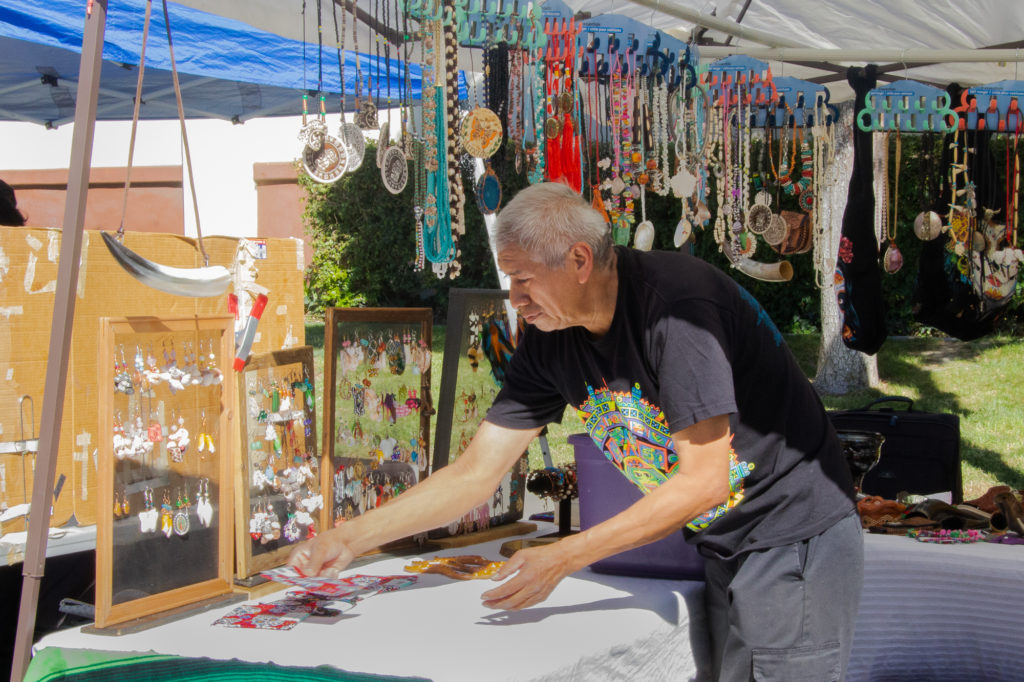
Tekuani Tepactia (healing lion), creates one-of-a-kind handmade jewelry. Each pair of shell and beaded earrings, wire-wrapped pendants and necklaces, are each packed with personality and history.
Tepactia comes to Tianguis to educate the youth, through having long conversations about the significance of their jewelry, symbols, crystals, stones, flutes, and more.
“Me da gusto que se involucren y encuentren su raíz.” he says.
It makes me happy when they get involved and reconnect with their roots.
Rufina Gutierrez

A few booths over, artisan Rufina Gutierrez from Oaxaca, Mexico sells hand-made rugs, clothing, clay pots, jewelry and more.
Rufina, her siblings and her daughter all continue their grandparents’ weaving legacy through her brand, The Zapotec Weavers. Days of skill and artistry are woven into each tapete, rug—a special artisanal practice passed on from Rufina’s father, Pedro Gutierrez.
“Cuando vendo un producto me siento feliz, orgullosa de poder ayudar a mi familia y me siento estar con mis padres en lo que ellos hicieron en el pasado” she said.
When I sell a product, it makes me happy, proud of being able to help my family. It makes me feel I feel like I am with my parents in what they did in the past.
Gutierrez is especially fond of sharing her story with new locals in DTSA. Connecting with others and sharing art enthusiasm is part of why The Zapotec Weavers make an appearance at Tianguis.
“Cuando estoy con mis paisanos, me siento segura de lo que estoy haciendo porque comparto y convivo con ellos,” Gutierrez said. “[Doy] a conocer nuestra cultura y arte porque somos orgullosamente Oaxaqueños y Zapotecos.”
When I am with my people, I feel safe in what I do because I share and live with them. I make our culture and art known because we are proudly Oaxacan and Zapotec.
Macehualli Pochtecatl

Multiple Aztec and Maya statutes cover the floor of Macehualli Pochtecatl’s booth at Tianguis Market.
The setting up process is difficult, says Pochtecatl. “Some pieces often break in the process.”
Amongst a moon goddess sculpture, Coyolxauhqui, Xolo earrings and obsidian necklaces, there was Cihuateotl, or “Divine Woman.” This goddess represents the women who died during or after childbirth. They were seen as divine deities of bravery and courage.
Macehualli comes to Tianguis to show support for the founder Nico, all while sharing Aztec and Maya ancestry.
- District considers a $720 million bond for November ballot - May 15, 2024
- Black Zone: a home for rockeros and metalheads - April 3, 2024
- Public is kicked out of Santa Ana city hall after protests swell - December 23, 2023




